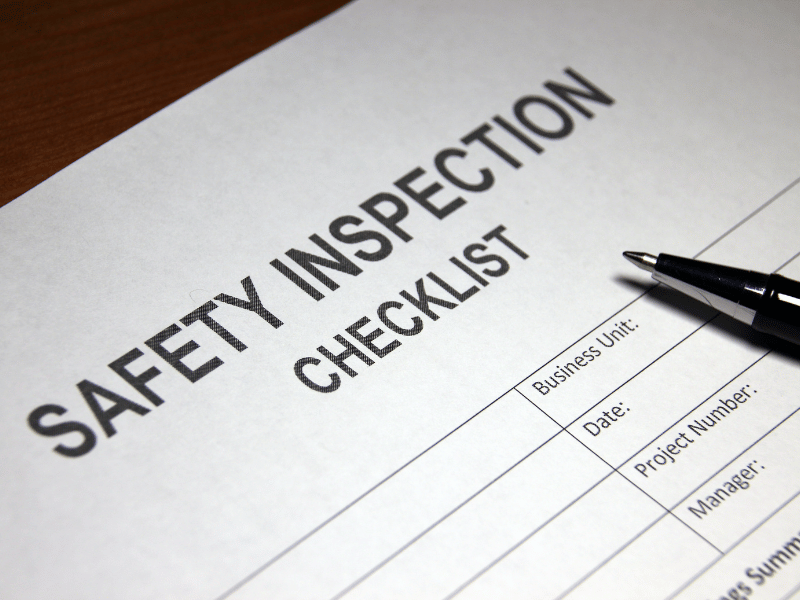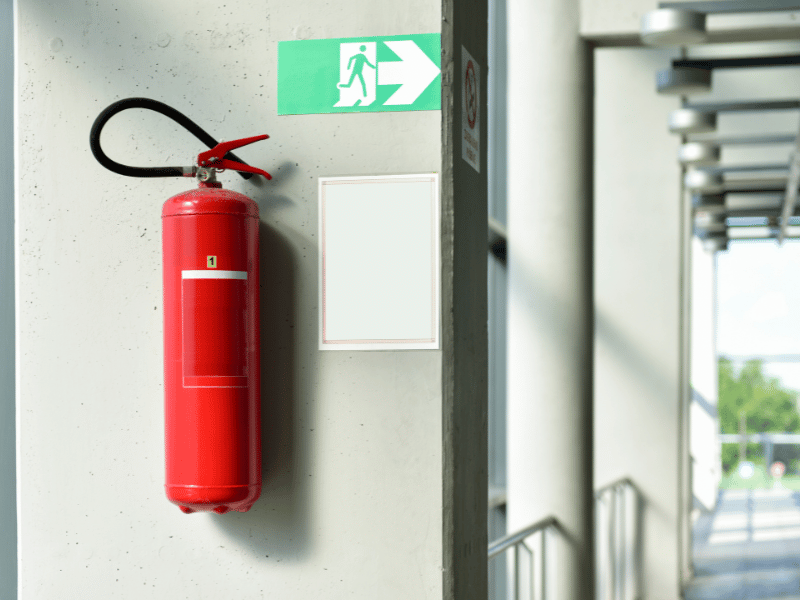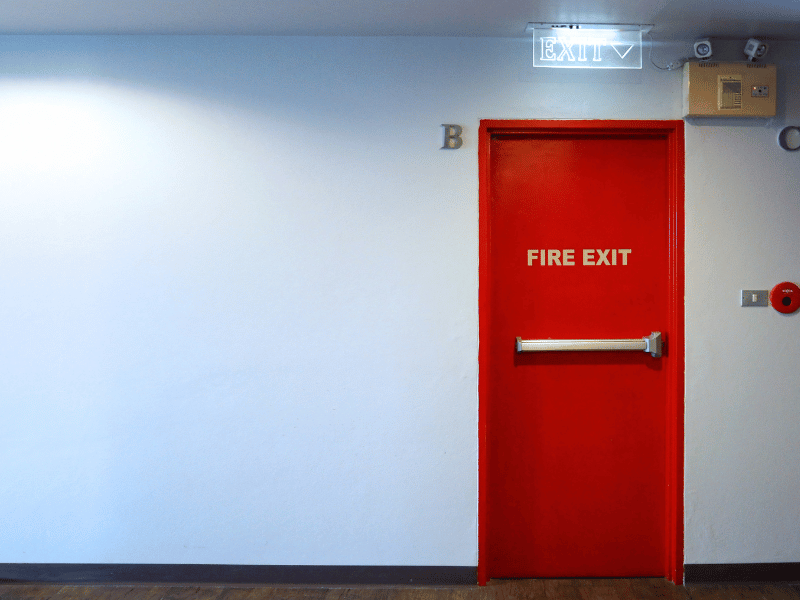Hotels face unique challenges in maintaining a safe environment, such as 24/7 operations, emergency preparedness, infectious diseases, and a diverse workforce. This hotel safety checklist helps managers and owners bolster their safety protocols and comply with OSHA standards.
Table of Contents

What Is an OSHA Hotel Safety Checklist?
A hotel safety checklist itemizes OSHA safety and health standards for your workplace. It helps you keep track of health and safety regulations in hotels to prevent work-related illnesses, injuries, and fatalities.
Howe & Hutton’s law firm says that OSHA doesn’t have specific standards for the hotel industry. However, hotels are covered by OSHA General Industry Occupational Safety and Health (29 CFR 1910) and Record-Keeping (29 CFR 1904) standards.
Hotel Safety Checklist Based On OSHA Standards
There is no “official” OSHA hotel safety standards checklist. The checklist below gives guidelines for the general industry, including hotels, but shouldn’t be used as a substitute for the detailed instructions of OSHA standards.
Fire Safety
- Develop a written fire prevention plan.
- Develop a written emergency action plan whenever an OSHA standard requires one. An oral plan should suffice for employers with ten or fewer employees.
- Provide adequate exit routes that are safe, unobstructed, well-lit, clearly marked, well-maintained, permanent, and separated by fire-resistant materials.
- Keep exit doors unlocked.
- Indoor and outdoor exit routes must meet minimum height and width requirements and other conditions set by the standard.
- Install and maintain a working fire alarm system.
- Provide easily accessible and suitable portable fire extinguishers, considering the size and configuration of the workplace.
- Qualified personnel must regularly inspect and maintain fire extinguishers.
- Provide fire extinguisher training to employees.
- Maintain records of inspections, maintenance, and employee training on fire extinguisher use.
- Employers may be exempt from fire extinguisher requirements if they satisfy the exemption requirements in 1910.157.

Hazardous Materials CFR 1910 Subpart H
Follow specific OSHA standards on these materials for cleaning or various purposes:
- Compressed gases
- Acetylene
- Hydrogen
- Oxygen
- Flammable Liquids
- Spray finishing using flammable and combustible materials.
- Explosives and blasting agents
- Storage and handling of liquefied petroleum gases
- Process safety management of highly hazardous chemicals
Hazard Communication CFR 1910.1200
- Develop, implement, and maintain a written hazard communication program.
- Provide information and training for employees on hazardous chemicals in the workplace.
- Hazardous chemicals should be labeled appropriately and include safety data sheets.
- Labels should not be removed or defaced.
Personal Protective Equipment 29 CFR 1910.137
- Provide free PPE for eyes, face, head, and extremities whenever necessary.
- Employers should ensure that PPEs are clean and well-maintained, even if the employees bring their own PPE.
- Assess workplace hazards and provide employees with the appropriate PPE.
- Provide PPE training for employees.
- Provide free replacement PPE except when the employee loses or intentionally damages the PPE.

Electrical Safety – 29 CFR 1910 Subpart S
- Electrical equipment should be examined and free from recognized hazards.
- Follow the instructions on the label when installing and using the equipment.
- Completed wiring installations and equipment should be kept in proper working condition, installed neatly, securely mounted or arranged, and connected with suitable materials and methods.
- Parts of electric equipment that produce arcs, sparks, or flames must be enclosed or isolated from combustible materials.
- Equipment must be marked with manufacturer identification, ratings, and other necessary information, with markings durable enough to withstand the environment.
- Disconnecting means must be marked for their intended purpose, durable, capable of being locked in the open position, and comply with series combination ratings if applicable.
- With electric equipment operating at 600 Volts or less, adequate access and working space must be provided around electric equipment for safe operation and maintenance, with specified dimensions and illumination requirements.
- Live parts of electric equipment operating at 50 volts or more must be guarded against accidental contact by approved cabinets, enclosures, or other means.
- Equipment and conductors used on circuits exceeding 600 volts must comply with specified provisions and additional requirements outlined in this standard.
- Give proper PPE to employees working in hazardous areas.
Bloodborne Pathogens 1910.1030
Note: An OSHA letter on occupational exposure to bloodborne pathogens says that it doesn’t generally consider housekeeping staff in non-healthcare facilities like hotels to have occupational exposure. However, it is the employer’s responsibility to identify jobs that may involve contact with blood or other potentially infectious materials. For example, employees may be exposed to soiled linen with urine that contains visible blood. In this case, employers may also delegate these types of asks to a trained employee.
Here are the guidelines on exposure control:
- Develop a written exposure control plan to minimize employees’ exposure to blood and other infectious materials.
- Employees should know about the plan, and it should be updated each year.
- Identify which jobs might expose employees to blood or other infectious materials.
- Take steps to prevent contact with bloodborne pathogens or other potentially infectious materials.
- Provide handwashing stations, special containers, and free PPE.
- Surfaces contaminated with blood or other hazardous materials should be cleaned and decontaminated promptly.
- Needles, other sharp objects, and regulated waste must be disposed of in designated containers.
- Laundry contaminated with blood or other infectious materials should be handled carefully, placed in special bags or containers, and laundered separately.
- Employees handling contaminated laundry should wear appropriate protective gear.
- Follow hepatitis B vaccination and post-exposure evaluation guidelines on 1910.1030(f).
- Provide free training during work hours to all employees at risk of occupational exposure.
- Training on OSHA standards should be provided when employees are first assigned tasks involving potential exposure and annually afterward.
- Additional training should be given within one year of previous training whenever changes in tasks or procedures affect exposure risks.
- Training must be conducted by qualified individuals.
Record-keeping 29 CFR 1904
- Record and report work-related injuries, illnesses, and fatalities using the OSHA 300 log.
- Complete and submit the log to OSHA on or before the specified deadlines.
- Incidents resulting in death should be reported to OSHA within 8 hours.
- Incidents resulting in amputation, eye loss, or in-patient hospitalization should be reported within 24 hours.
- Maintain records of all OSHA 300 logs.
- You must post the summary form of workplace incidents in a visible area from February to April every year.







